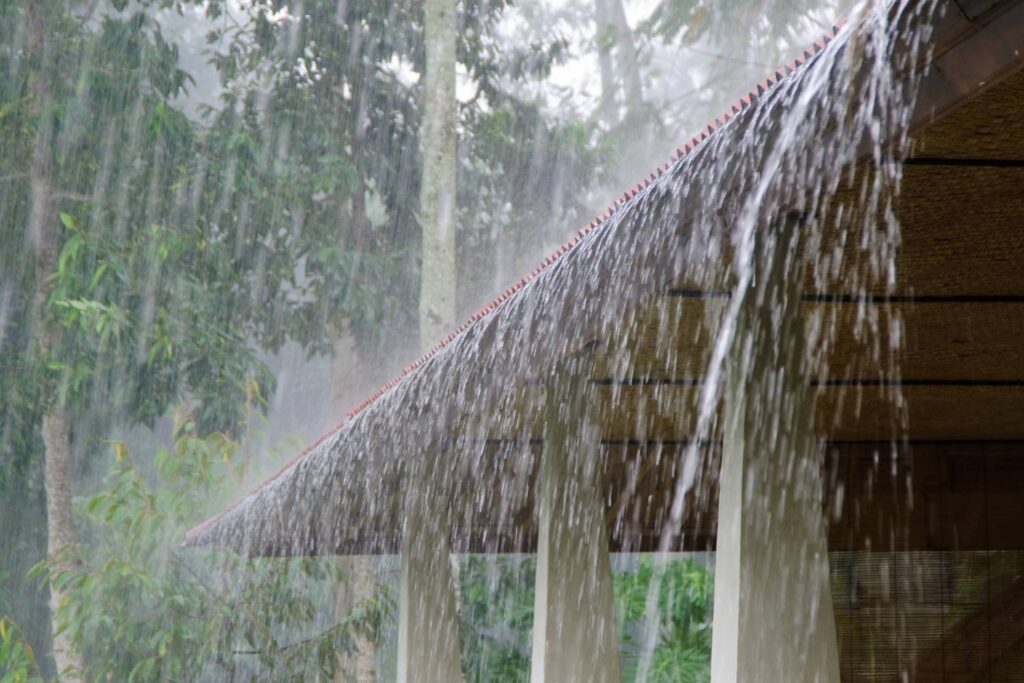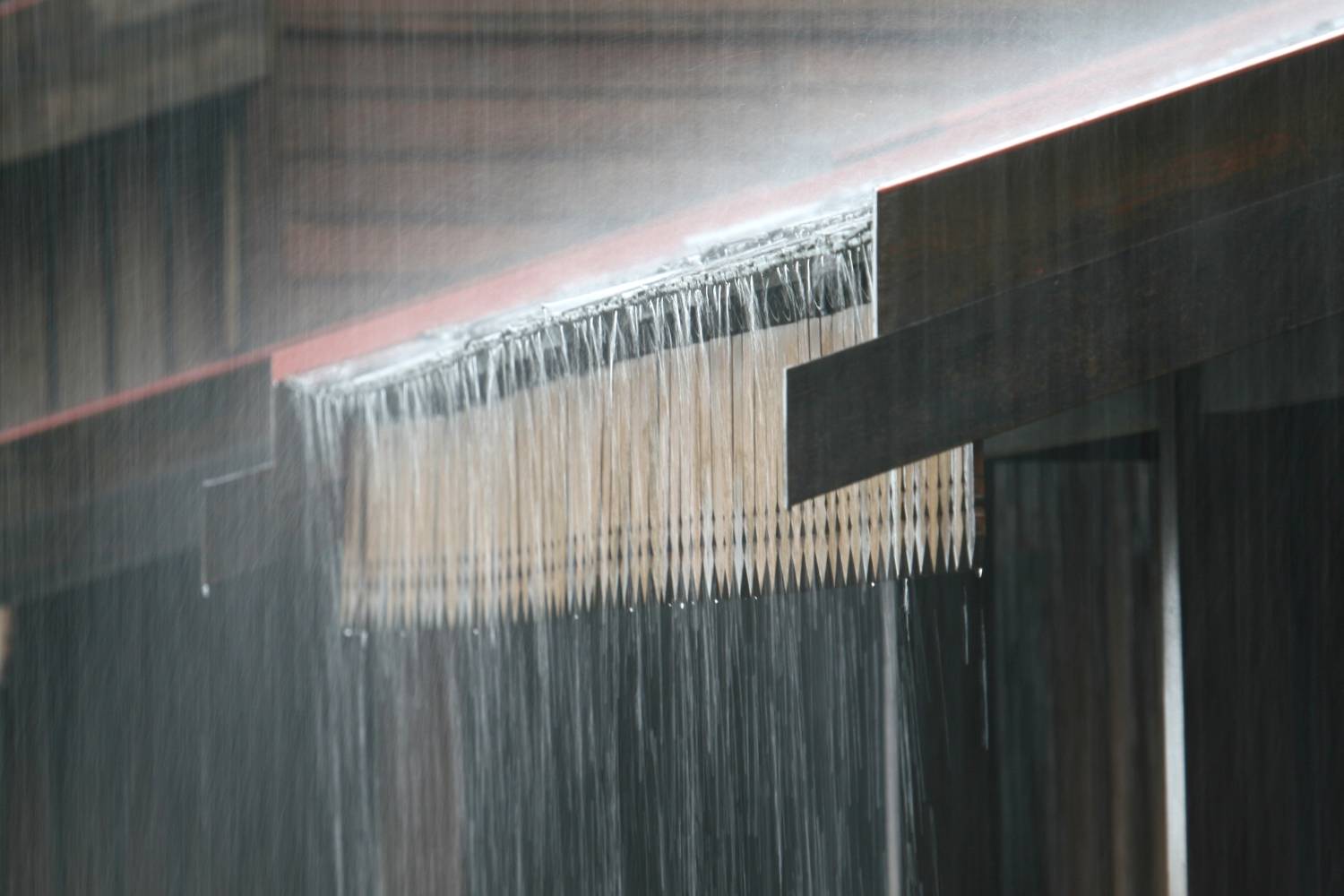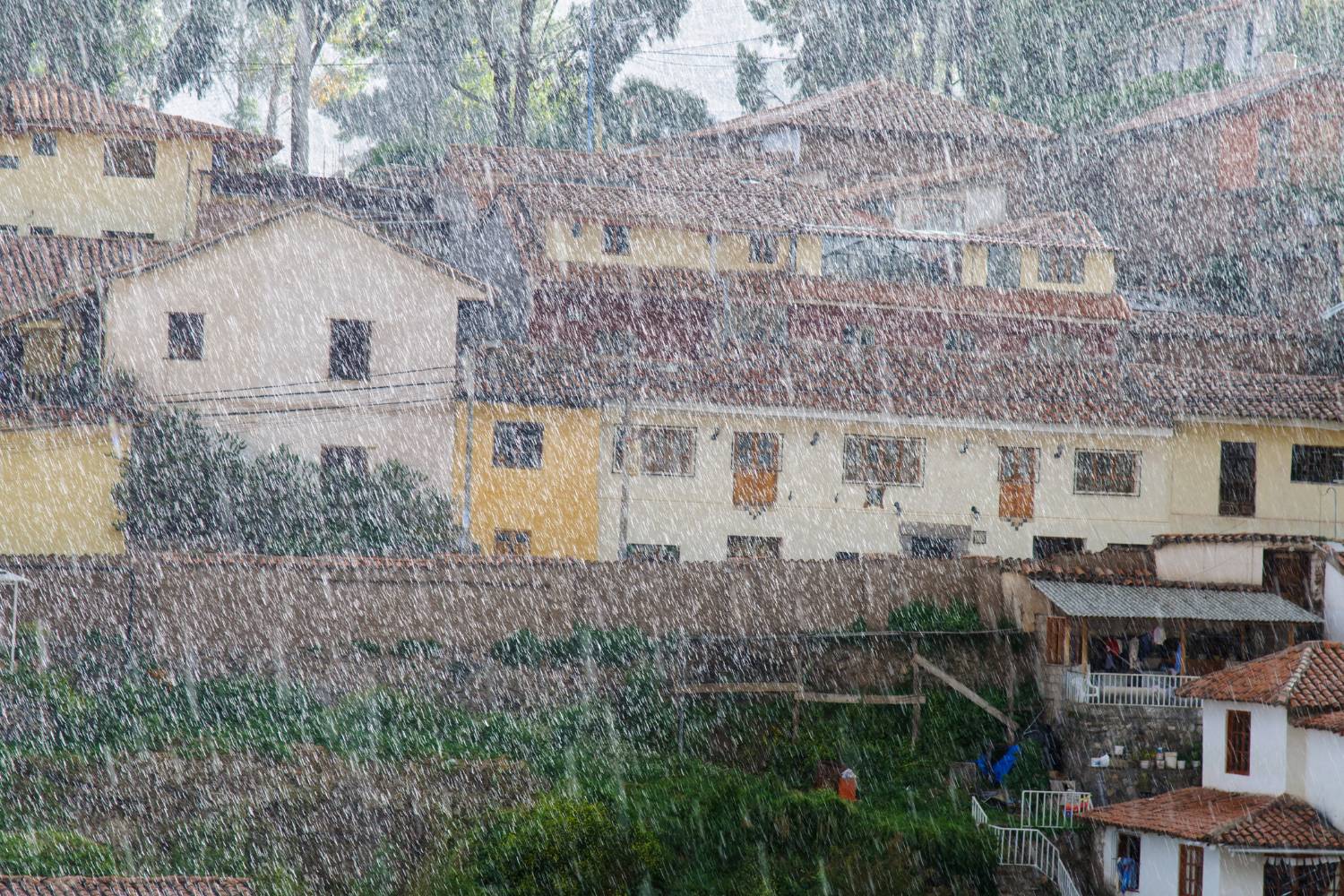When a storm hits, it can bring a host of challenges, but a leaking roof is one of the most stressful situations a homeowner can face. Your roof, being the primary shield against the elements, is put to the test during severe weather conditions. Understanding how to handle a roof leak during a storm is crucial to prevent extensive damage and costly repairs.
In this blog, the immediate safety precautions to take, the common causes of roof leaks during storms, and the best practices for dealing with and preventing such issues. Whether you are dealing with high winds, heavy rain, or debris accumulation, knowing what steps to take can make all the difference in protecting your home and belongings.
Read on for a comprehensive guide to managing roof leaks during a storm and ensuring your roof remains resilient against nature's fiercest conditions.
What Are the Immediate Safety Precautions?
Understanding Roof Leaks During Storms
When a storm hits, your roof is your first line of defence against the elements. Understanding the common causes of roof leaks during storms and how to prevent them can save you from significant damage and costly repairs. Here's a comprehensive guide to ensure your roof remains leak-free, even during the fiercest weather.
What Causes Roof Leaks During Storms?
Roof leaks during storms are often caused by a combination of factors, including wind, rain, and debris. Here are the primary culprits:
- Wind Damage: Strong winds can lift shingles, break branches, and dislodge roof materials, creating openings for water to enter.
- Rain Penetration: Heavy rain can exploit even the smallest weaknesses in your roof, such as cracks or gaps in shingles, flashings, or seals.
- Debris Accumulation: Debris like leaves, twigs, and dirt can clog gutters and downspouts, causing water to back up and seep into your roof.
Preventive Maintenance
Regular Inspections and Maintenance: To catch potential issues before they escalate, schedule roof inspections at least twice a year and after significant storms. During these inspections, look for:
- Missing or Damaged Shingles: Shingles protect the underlying roof structure. Replace any that are missing, cracked, or curling.
- Cracked Flashings: Flashings around chimneys, vents, and skylights are prone to damage. Ensure they are intact and properly sealed.
- Loose Materials: Check for any loose nails, screws, or other fasteners that could allow water ingress.
Immediate Actions During A Roof Leak
How Should You Stay Calm?
When you first notice a roof leak, it's crucial to remain calm. Assess the situation from a safe distance to understand the severity of the leak. Quickly identify the source of the leak if possible, but avoid putting yourself in danger. Taking a deep breath and staying composed will help you manage the situation more effectively.
How Can You Protect Your Belongings?
To prevent damage to your belongings, move valuable items and furniture away from the leak. Use plastic sheets or tarps to cover items that cannot be relocated. This will help protect them from water damage and minimise the potential for further losses.
What Are the Best Ways to Contain the Leak?
Place containers or buckets directly under the leak to catch the dripping water. This simple step can prevent additional damage to your home's interior. Make sure to check the containers regularly and empty them as needed to avoid overflow.
Why Should You Clear Your Gutters?
Clogged gutters and downspouts can exacerbate a roof leak by causing water to back up and increase pressure on the roof. Clear any debris from your gutters immediately to help alleviate this pressure and allow water to flow freely away from your home.
When Should You Use Tarps?
For more extensive leaks, covering the affected area with tarps or plastic sheets can provide a temporary barrier against water entry. Secure the tarps tightly to ensure they stay in place and effectively keep water out until a professional can assess and repair the damage.
How Do You Manage Water Flow?
Using a sump pump can be an effective way to manage excess water flow and prevent flooding inside your home. Position the pump in the area where water is accumulating to help remove it quickly and efficiently.
Why Is It Important to Turn Off Power?
If the leak is near electrical outlets or appliances, turning off the power in that area is essential to prevent electrical accidents or fires. Water and electricity are a dangerous combination, so taking this precaution can help keep your household safe.
When Should You Evacuate?
If the leak poses a severe risk, such as a potential ceiling collapse or extensive water damage, evacuate the premises immediately. Seek shelter in a safe location and contact professionals for help. Prioritising your safety and the safety of your family is paramount in such situations.
How To Mitigate Immediate Damage?
When unexpected damage occurs, whether to your home or business, knowing how to respond quickly and effectively can prevent further harm and reduce long-term costs. Here's a comprehensive guide on how to mitigate immediate damage based on the best practices from emergency roof repair and risk mitigation strategies.
Responding To Sudden Roof Damage And Leaks
Handling Structural Damage:
- Safety First: Evacuate the premises if there is a risk of collapse and call emergency services.
- Secure the Area: Prevent access to the damaged area to avoid injury or further damage.
- Temporary Support: Use bracing or shoring to stabilise the structure until permanent repairs can be made.
Insurance and Preventative Measures:
- Insurance Claims: Report the incident to your insurance provider promptly. Provide documentation and estimates from contractors.
- Preventative Maintenance: Schedule regular roof inspections, trim overhanging branches, clean gutters, and ensure proper insulation.
Steps For Immediate Roof Leak Repair
Identifying the Leak
Locate the Source:
- Inspect Interior: Begin by inspecting your home for signs of water damage. Look for water stains on ceilings and walls, damp spots, or peeling paint. These signs often indicate where the water is entering your home.
- Trace the Water Path: Once you identify interior signs of a leak, trace the water back to its entry point on the roof. This may involve checking the attic or crawl spaces. Look for wet insulation, mould, or moisture trails that lead to the leak's source.
Temporary Measures:
- Contain the Water: Place containers or buckets under the leak to catch dripping water and prevent further damage to your home's interior.
- Patch Small Holes: For small leaks, apply roofing tar or a waterproof sealant to the affected area. Use a putty knife or similar tool to spread the sealant evenly over the hole.
Clear Debris:
- Remove Obstructions: Clear away leaves, branches, and other debris from the roof and gutters. Blockages can exacerbate leaks by preventing proper water drainage.
- Ensure Flow: Check downspouts to ensure water is flowing freely away from your home. Clogged gutters can cause water to back up and seep under the roofing materials.
Inspecting and Repairing
Inspect Flashing and Seals:
- Check Critical Areas: Inspect the flashing around chimneys, vents, and skylights for signs of damage or wear. Flashing is prone to cracks and gaps, which can be a major source of leaks.
- Repair or Replace: If you find damaged flashing, either repair it using a sealant or replace it entirely. Ensure that the new flashing is properly sealed to prevent future leaks.
Patch Roofing Materials:
- Apply Roofing Cement: For minor fixes, use roofing cement to patch up small cracks or holes in the roofing material. Apply a generous amount to ensure a watertight seal.
- Replace Damaged Shingles or Tiles: If you find cracked or broken shingles or tiles, remove the damaged pieces and replace them with new ones. Secure them properly to ensure they are firmly in place and can withstand weather conditions.
Additional Measures:
- Reinforce Weak Spots: After addressing immediate leaks, inspect the entire roof for weak spots or areas that might become problematic in the future. Reinforce these areas with extra sealant or roofing materials as needed.
- Schedule Professional Inspection: Even after making temporary repairs, it's advisable to schedule a professional roof inspection. A roofing expert can provide a thorough assessment and recommend long-term solutions to prevent future leaks.
Risk Mitigation Strategies
Risk mitigation involves a series of steps designed to identify, assess, and manage potential threats to an organisation's objectives and operations. By adopting a proactive approach, organisations can protect themselves from various risks and ensure smoother functioning.
Proactive Approach:
Identification
Recognise potential risks before they become significant issues. This involves a thorough analysis of all aspects of the organisation.
Assessment
Evaluate the identified risks in terms of their potential impact and likelihood. This helps in prioritising which risks need immediate attention.
Mitigation: Develop and implement strategies to minimise the impact of risks on the organisation.
Risk Management:
Risk management is a comprehensive process that involves the entire lifecycle of risk handling. This process includes the following stages:
Identification
The first step in risk management is to identify all potential risks.
Assessment
Once risks are identified, they are assessed based on their severity and likelihood.
Mitigation
Strategies are developed to either eliminate or reduce the impact of these risks.
Monitoring
After mitigation strategies are implemented, continuous monitoring is essential to ensure they are effective.
Response
Developing a plan for how to respond if a risk materialises is crucial for minimising damage.
Types of Risks and Mitigation Strategies:
Risk mitigation involves a series of steps designed to identify, assess, and manage potential threats to an organisation's objectives and operations. By adopting a proactive approach, organisations can protect themselves from various risks and ensure smoother functioning.
Benefits of a Proactive Risk Management Approach
- Improved Decision-Making: By understanding potential risks and their impacts, organisations can make more informed decisions and allocate resources more effectively.
- Enhanced Resilience: Proactive risk management helps build resilience, enabling organisations to withstand and recover from adverse events more quickly.
- Competitive Advantage: Organisations that manage risks effectively can gain a competitive edge by being better prepared for uncertainties and seizing opportunities that others might avoid.
- Compliance and Reputation: Effective risk management ensures compliance with regulatory requirements and enhances the organisation's reputation by demonstrating a commitment to risk-aware practices.
Conclusion
Dealing with a leaking roof during a storm is undoubtedly a stressful experience, but being prepared and knowing the right steps to take can make a significant difference in minimising damage and protecting your home. By staying calm, protecting your belongings, and taking immediate actions like clearing gutters and using tarps, you can manage the situation effectively until professional help arrives.
Regular maintenance and proactive inspections play a crucial role in preventing roof leaks during storms. Ensuring your roof is in good condition and addressing any potential issues before they escalate can save you from costly repairs and extensive damage. Additionally, understanding the causes of roof leaks, such as wind damage, rain penetration, and debris accumulation, can help you take preventive measures to keep your roof resilient.
Frequently Asked Questions
If your roof starts leaking during a storm, the first step is to minimise damage to the interior of your home. Move any furniture, electronics, and valuables away from the affected area. Place a bucket or container under the leak to catch dripping water, and use towels or plastic sheets to protect the surrounding area.
To temporarily stop the leak, you can use a tarp or plastic sheeting to cover the damaged area from the inside. Secure it with heavy objects to prevent it from moving. If it's safe to do so and the storm has calmed, you can also place a tarp on the exterior of your roof to minimise water entry.
No, it is not safe to go on the roof during a storm. High winds, rain, and slippery surfaces can make it extremely dangerous. Wait until the storm has passed and the conditions are safe before attempting any roof repairs.
Contact a professional roofing contractor who offers emergency repair services. Many roofing companies have 24/7 emergency response teams to handle urgent situations like storm damage. Have their contact information readily available for quick access during such emergencies.
Document the damage by taking photos and videos of the affected areas. Keep records of any temporary repairs you make and the steps you take to protect your property. Contact your insurance company as soon as possible to report the damage and begin the claims process.


